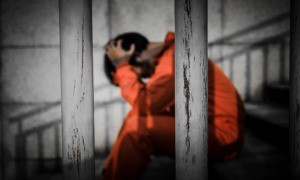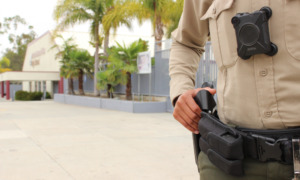***Campaign for Youth Justice (CFYJ) has released a really good report on trends away from involving juveniles in criminal court or adult jails and prisons. It provides a macro-view of changes at the state level.
The report identifies four trends that favor more juveniles being handled within the juvenile justice system: removing more youth from jails and prisons, raising the state age of jurisdiction, changes in transfer laws, and reform of sentencing laws.
The map that accompanies the study drives the point home: the campaign identified 24 of 50 states where one of those four things has already been accomplished or where one or more of the reforms is “underway.”
A few additional thoughts on the report:
-There is a really interesting chart on page 16 with information that we had never seen: the number of juveniles under 18 who are in adult prisons, as opposed to those who are convicted as adults and held in juvenile facilities until they turn 18.
The chart reveals that this is not really a national problem; it’s pretty localized to a group of states. Almost half (46 percent) of the juveniles behind bars before they become adults are in Florida, Connecticut, North Carolina, New York and Arizona. And about 70 percent of the teens in prison are in 10 states: the aforementioned five, Texas, Michigan, Alabama, Nevada and Illinois.
-The Colorado legislature has been notably active on juvenile justice issued in the past few years. Consider the following legislative action from the past three years:
*Passed a law (in 2010) that mandates school districts to provide educational services for juveniles held in adult jails. The cost involved with setting up a school in adult jail for a handful of juveniles might be so onerous that counties just start holding them in juvenile facilities, where educational services are already available.
*Passed a law (in 2008) that allows judges to sentence juveniles convicted of felony murder to a Youthful Offender System. In 2009, another law allowed judges to enter some young adults (18 to 21) in the the Youthful Offender System.
*Passed a law (in 2010) that raised the minimum age at which prosecutors can direct file charges into criminal court from 14 to 16.
-The report states that Wisconsin is poised to include 17-year-olds in its juvenile justice system. You have to think such a move is jeopardized by Gov. Scott Walker’s announcement this month that the state would close two of its main juvenile facilities. Lowering the number of secure beds in the juvenile justice system while increasing the number of older juveniles who might occupy a secure bed is not likely to add up.
Same thing with New York. Closing a slew of the state’s juvenile facilities would greatly diminish the capacity of the state to accommodate more juveniles, which it probably would have to do if the age of jurisdiction was raised. Currently, all New Yorkers are considered adults in the eyes of the law when they turn 16.
***Today is the 787th day of the Obama administration, and still no nominee for the administrator job at the Office of Juvenile Justice and Delinquency Prevention.
“Outrageous,” said Liz Ryan, CEO of the Campaign for Youth Justice, a national organization that advocates removal of juveniles from adult jails and prisons. “It’s just past time. They can’t say they haven’t had good candidates.”
The only name with any buzz at the moment is Jane Tewksbury, who currently heads the juvenile justice system in Massachusetts. But she has been a candidate for months now.
***The Senate agreed to a three-week continuing resolution yesterday, so the government will be open for business through some of April, at least. JJ Today sat in on an Urban Institute briefing yesterday on federal and state spending, and got the gist that this steady diet of short resolutions is driving states crazy and creating utter confusion with programs like Head Start, which might get level-funded or might get slashed by a billion dollars depending on what kind of deal the Republicans and Democrats can reach (if any).
Good story by Richard Cohen of Politico here: if you think the haggle over 2011 spending is bad, wait until its time to debate the 2012 budget. Given the back-and-forth over Obama’s juvenile justice proposal for 2012, it will be interesting to see how House Budget Committee Chairman Paul Ryan (R-Wis.) addresses the juvenile justice account.
***The U.S. Supreme Court will hear oral arguments in JDB v North Carolina, a case in which the court could establish some ground rules on situations in which police must Mirandize youths to question them on school grounds. “J.D.B.,” a 13-year-old special education student, confessed to a string of neighborhood burglaries when police and school administrators questioned him at school, without advising him of his rights or calling his parents.
Here is how the amicus briefs filed in the case lay out.
For JDB:
Center on Wrongful Convictions of Youth
American Civil Liberties Union
National Association of Criminal Defense Lawyers
For North Carolina:
Thirty states, Guam and Puerto Rico
National District Attorney’s Association
You can click here and here for previous posts from Youth Today on the subject, and check the website on Monday for an opinion piece about the case by Richard Gardell, a respected juvenile justice leader, who is also a former police officer,





























